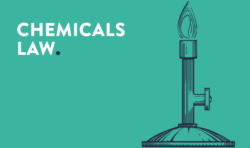For wood-based articles and furniture as well as the interior of road vehicles, the relevant limit will in future be 0.062 mg/m³ formaldehyde in indoor air. For all other articles such as textiles, leather, plastics, construction materials or electronic products, the new limit is 0.080 mg/m³.
The reason for this is that formaldehyde is classified under the CLP Regulation as a carcinogen and mutagen substance, among other things. Nevertheless, formaldehyde is a chemical with a high production volume and a variety of uses. For example, formaldehyde-based resins are mainly used in the production of wood-based materials as a binder for wood shavings, but are also used in other products such as furniture and floor coverings, foams, textile and leather products, and in parts of road and air vehicles.
Based on a dossier prepared by ECHA on behalf of the Commission and opinions adopted by RAC and SEAC, the Commission considers that emissions of formaldehyde indoors cause an unacceptable risk to human health due to the properties mentioned above and that this risk can only be adequately addressed by setting a limit value.
However, products that naturally release formaldehyde or formaldehyde releasers are excluded from the scope of the restriction.
Apart from second-hand articles, articles that are exclusively intended for outdoor use, such as articles in structures that are used exclusively outside the building shell and the vapour barrier, are also exempt, provided that it is ensured that no formaldehyde can be released into the indoor air.
In setting the restriction mentioned at the beginning, the Commission ranges between the higher WHO limits proposed by the dossier submitters and the much lower limits considered necessary by the RAC, which, however, in the Commission’s view and to that extent in line with SEAC, would have entailed significant socio-economic impacts amounting to billions of euros. According to the Commission’s estimate, these will amount to hundreds of millions of euros for the industry anyway.
For the industries affected, the transitional periods set by the Commission must be noted. In principle, these are 36 months, but in the case of road vehicles they are extended to 48 months after the entry into force of the regulation. However, until the harmonised restriction begins to apply, any requirements under national law, such as the regulatory requirements under Annex 1 to the ChemVerbotsV, remain applicable.
Since the Regulation enters into force on 06.08.2023 after its publication in the Official Journal of the European Union on 17.07.2023 in accordance with Article 2 of the Regulation, these transitional periods according to Annex XVII para. 77 subpara. 1 and subpara. 2 of Regulation (EC) No. 1907/2006 end on 06.08.2026 and 06.08.2027 respectively for road vehicles.
Do you have any questions about this news, or would you like to discuss it with the author? Please contact: Martin Ahlhaus






